Why does my cat have crossed eyes?
Siamese cats and Siamese mixes are the cats who most commonly have crossed eyes. The crossed eyes of the Siamese cat developed naturally to compensate for a genetic flaw in their eye structure. Although the cat's eyes are not permanently crossed, traditional Siamese cats must cross them to see straight.
Cats' eyes point forward, like human eyes. Each eye has one spot that sees the same thing as the other eye. Nerves communicate the image to the brain, which puts the two together as one clear image.
Human retinas rest at the back of the eye straight on, so we look straight ahead to see. With Siamese cats, the left retina tilts in toward the right and the right retina tilts left. If the cat looked straight forward, it would see two different images. Siamese cats have compensated by crossing their eyes to place the retinas in line and to see more clearly.
You may also see your Siamese cat’s eyes jiggle back and forth, which is another genetic trait called nystagmus. Unless your cat is acting dizzy or off-balance, this is normal.
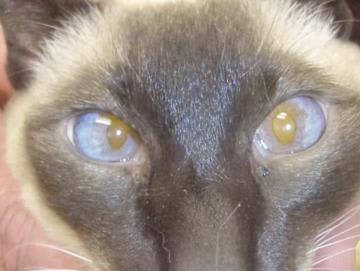
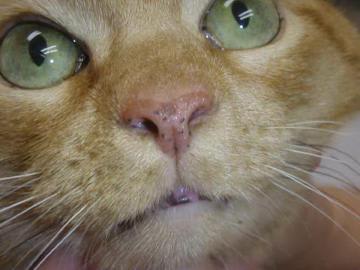
What are the black spots on my orange cat’s lips and nose?
According to Catster:
“Lentigo is a genetic condition in your cat that results in dark, freckle-like spots.
The spots are either black or brown, and if your kitty lets you touch them, you’ll find that they are either flat or slightly raised.
The freckles have clearly defined edges. Each one is as small as 1 millimeter and as big as 10 millimeters. The skin around them is the normal color.
If your cat just has a few freckles, the condition is called lentigo simplex. If he has lots of freckles that crowd together so much that they merge into larger patches of big freckles, it is called lentiginosis profusa (multiple lentigines syndrome). It’s a lot easier to call it lentigo… or, easier yet, just freckles.
The freckles are the result of the pigment-producing cells called melanocytes having more melanin than the surrounding skin. No one knows why some cats have the genetic predisposition for lentigo while other cats the same color don’t.”
We do know that lentigo is linked to the genes that give cats their orange color, so redhead cats are more prone to these freckles. They are normal and benign.
Is that an extra toenail on my cat’s toe pad?
If you see what looks like an extra toenail but it’s coming off of the pad, it’s probably a cutaneous horn.
According to DVM360: “Cutaneous horns are composed of keratin overgrowth. They may affect one or multiple footpads.
Often thin and horn-like (hence the name), they may appear like second "nails" close to the nails on the digital pads. If not on a weight-bearing surface, these lesions usually do not cause lameness. If on the plantar surfaces of the pads, they may cause discomfort in walking.
If the horns are not causing lameness, the lesions are often ignored. The horny growth can be removed by trimming, however, the horns will often recur. Horns causing discomfort should be removed and, if it is possible to do so without causing a large pad defect, the base of the lesion should be excised to prevent re-growth.”
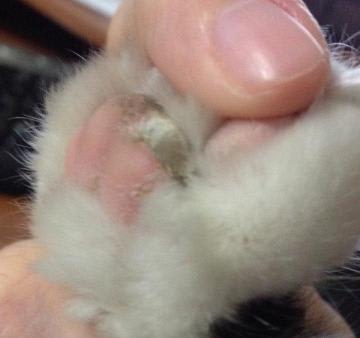
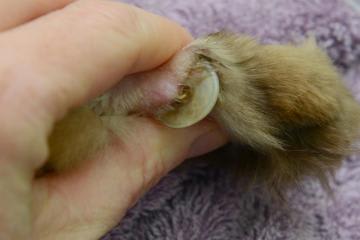
Why is my older cat getting thick or ingrown toenails?
Normally, the outer sheath of cats’ toenails is shed when they scratch. As cats get older, they often develop arthritis that keeps them from being able to extend and scratch.
They also can’t retract their nails as well. They can also have metabolic diseases that can lead to thicker toenails.
These thicker toenails tend to curl faster and can penetrate the toe pads. It is important to keep older cats’ nails trimmed regularly to prevent this painful condition.
Why does my cat have such a droopy belly? Can you do a tummy tuck?
That flap of loose skin on your cat’s abdomen is normal, and it doesn’t mean your cat is fat. It’s actually called the primordial pouch.
Experts believe that the loose skin found on our cats’ bellies serves different purposes. One is that it provides extra protection during cat fights for the vital (and vulnerable) organs.
Another theory is that this pouch allows cats to be more flexible and able to extend their bodies further when running and jumping.
And lastly, it is also theorized that these bellies provide some extra room after consuming a large meal — which is especially important for wild cats who may not know when they’ll eat again.
We do know that the primordial pouch is found on most domestic cats and also on wild cat species. It is not caused or affected by spaying or neutering. And no, we don’t do “tummy tucks” on this normal part of the cat’s body.

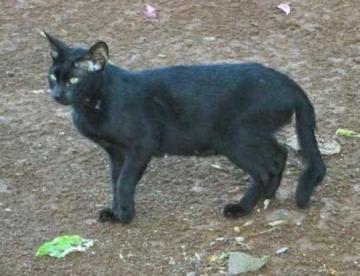
Why does my cat’s tail have a bend or kink in it? Does this mean she broke the tail?
While some bends in cat tails are due to trauma, the much more common cause is that they’re born that way.
Once again, genetics play a part in determining if there’s a kink in the tail. Siamese cats traditionally had kinked tails, and some breeds like Japanese Bobtails are required to have a short kinked tail.
But any breed can have it. If you’re worried that your cat went through a terrible experience getting that crooked tail, rest assured that she was probably born that way.
